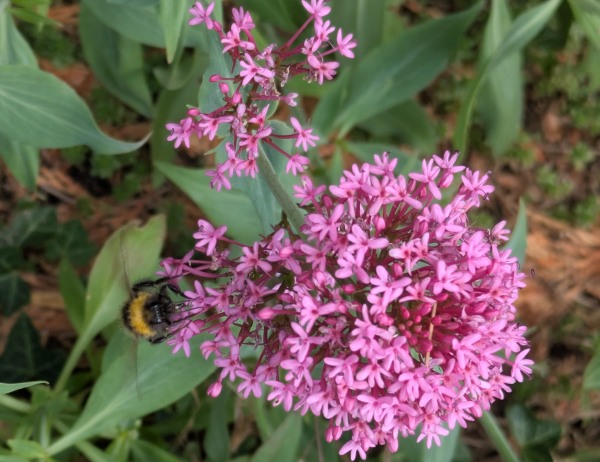
At Spring Road Cemetery, the grass has been left to grow, along with wildflowers such as this valerian near the edge. Valerian is thriving this year — growing on walls, beside walls, and wherever it can find a gap at an edge. Its pink or red or white flower clusters attract bees.
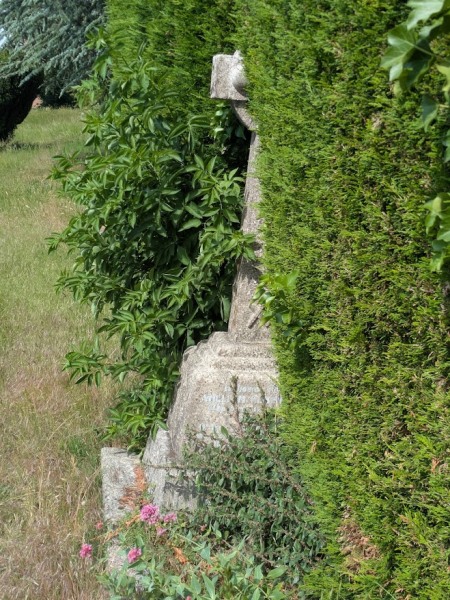
It was growing by a cross that is at the edge of the cemetery – so near to the edge that a hedge is swallowing it up.
Category Archives: cemetery
St Helen’s Churchyard

St Helen’s closed churchyard is a space thousands of people walk through every day from South Abingdon to the town centre and back. The churchyard itself is fenced off, and people do not normally wander among its graves.
At present, in late February, white blossom softens one corner by the church.

The neat doors and windows of the Almshouses stand in contrast to the worn, leaning gravestones. Some of the gravestones seem to have been left as ornaments, while others appear to have been removed to make maintenance easier. Most of these stones are too worn to read. I am not sure when the last burial took place or when the churchyard was officially closed. The Town Council is now responsible for maintaining it.

Elsewhere in the churchyard, old tombs have been left undisturbed, covered in moss. Light filters through the trees, casting shadows on the stones, while dry leaves gather in the corners. Some names are still legible here, such as Mary Jenner and Richard Messenger Jenner. Mr. R. M. Jenner was a manager of the Savings Bank in Abingdon, according to the Berkshire Chronicle of 20th May 1843.
Spring Road Cemetery with Peterborough ware and Copper Awl
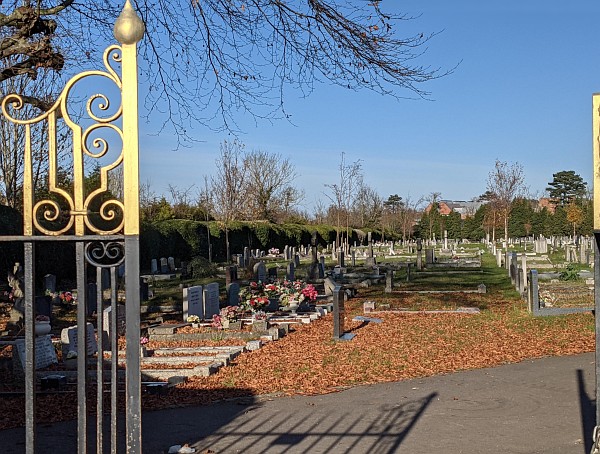
Agricultural land, beside Spring Road, was purchased by Abingdon Town Council and converted into a cemetery in 1940
Every now and again the grave diggers would find things of historic interest: old graves, tools, broken pots, and jewelry. One Cemetery Superintendent, Bill Skellington, has recorded the details of a lot of the finds (Neolithic, Iron Age, Roman, Saxon, and more recent.) The occupants of old graves were re-interred in new graves by him and his staff.
Around the year 2000 AD, a large trenched area was dug in the unused part of the cemetery to allow archaeologists to investigate some of the undisturbed land before it was used for cemetery burial. A book all about the dig, in 2000 AD, called ‘Saved from the Grave – Neolithic to Saxon – Spring Road Municipal Cemetery’ was written by T Allen and Z Kamash.
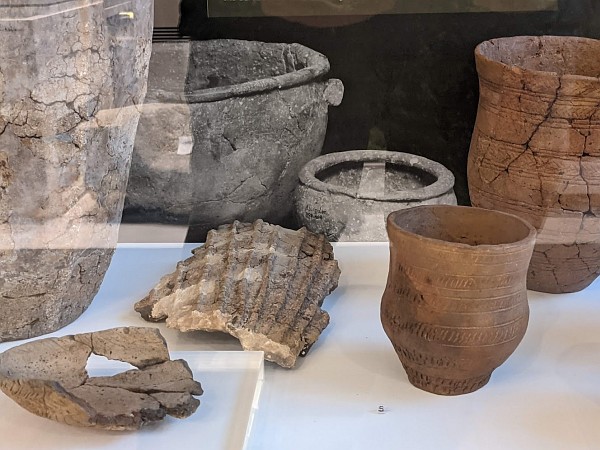
This picture shows some of the Neolithic pots in Abingdon Museum. The photograph of pots at the back are of ones found at Barrow Hills and were given the name of ‘Abingdon Ware’ because that type of pot was first found in Abingdon.
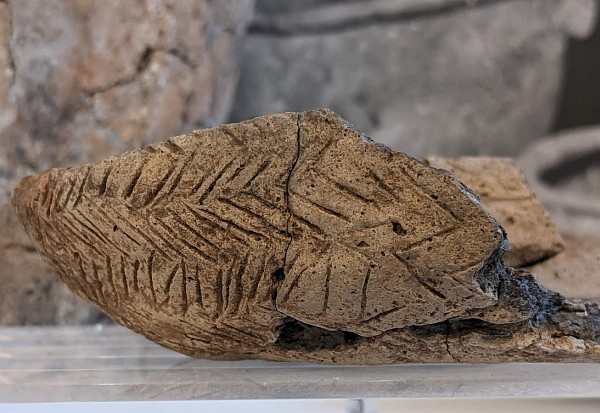
The pot at the front is half of an elliptical dish, called Peterborough Ware – because the first one, with this patterning, was found near Peterborough. This is the dish shown in the ‘Saved from the Grave’ book – found in Spring Road Cemetery.
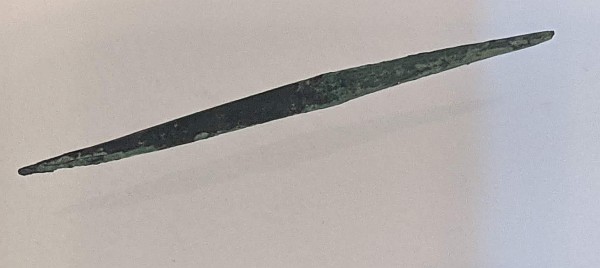
There is also a copper awl on display in the museum found in a female grave. The label says it is one of the oldest copper tools ever found in Britain.
Most artifacts now go to the Oxfordshire Museum stores at Standlake. I expect the current grave diggers still find artifacts that need recording.
Masefield Crescent field
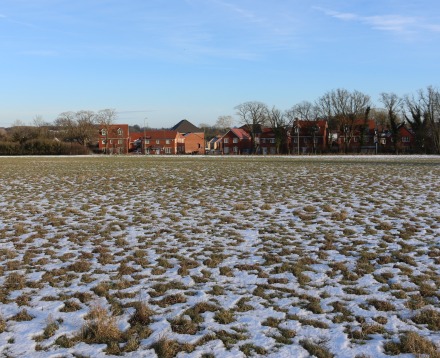
Another sunny day with snow. The snow reminded me of the rippled sand as the tide goes out. This is the view from the field south of Masefield Crescent, looking towards the new Morland Gardens development in South Abingdon. The field (or possibly the adjoining field ) got a mention in a recent Town Council meeting as being a possibility for the new cemetery – subject to the Vale of White Horse District Council giving or selling the land, and access and ground being OK.
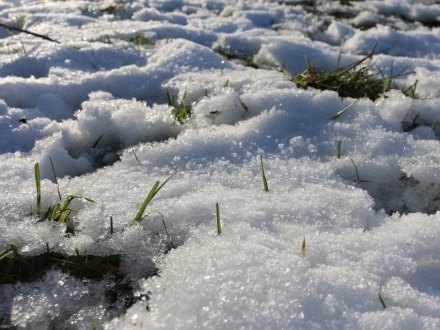
The field slopes gently from a ploughed farm field to the Drayton Road. About twenty years ago the field was designated an open access field where people could walk. The grass is cut in June to make hay, and people walk their dogs all the way round, or across the top.